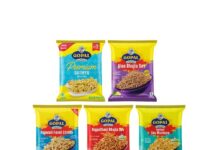
Wheat is a staple grain across the planet. Even though the population across the world has increased in the past 50 years, global hunger remains a major issue waiting for solutions despite capitalism. During the past centuries, people of a region with bad harvests would have been deprived of food. However, international trade between 1840 and 1910 changed the course of global trade in grains.
Currently, less than half the food we eat is bought in by import or export. Crop failures due to climatic changes can be handled effectively now by getting them from regions with a good harvest.
The El Nina climatic effect on food harvest
Production output in American soya and cornfields gets less due to the La Nina climate cycle, but it is more in the Asian countries as per the information stated in Business Standard.
The El Nino cycle reduces wheat production in Australia and US and increases in Russia and China. Bengal and Indonesia have increased rice production, whereas China and Mainland Southeast Asia suffer during this cycle.
As long as the nations that depend on food imports have funds to pay, people will not go hungry. But it misleads us. Despite advanced methods of trade, we are majorly dependent on food from the US, South America, Indo-Gangetic Plain, and eastern China.
When extreme climatic conditions bar few regions from exporting food, our dependence on others increases. We are left to fend for ourselves with food items of previous years available in the imported stock.
Current world situation in terms of food
A report published in Business Standard states that, India has put a hold on its wheat exports to take care of its food scarcity after a tough pre-monsoon heatwave that battered the winter harvest. But the entire world is dependent on food grains from India due to the current war situation between Russia and Ukraine, the drought in Argentina, and floods in Australia.
China, the world’s largest wheat consumer and producer, has been stocking up its wheat produce due to its disturbing relations with other food-exporting regions. Spring red wheat in Chicago has grown expensive and reached a 14-year high in March.
Expectations to balance the food scarcity in one place with food imports are normal. But the constantly changing climatic conditions due to excessive rainfall or drought have resulted in problems all over. The wheat export condition is at an all-time low in Australia due to intense rainfall, washing away the seeds and crops.
Moreover, political issues affect the import and export of a region. Ties connecting Russia, China, and Ukraine are already fragile due to geographical issues, and this has a significant impact on the global food system. Besides, the current La Nina phase is also not allowing the previous year’s crop supply to get stocked.
IndiFoodBev — authentic, impactful and influential
An English-language food and beverage processing and packaging industry B2B platform in print and web, IndiFoodBev is in its third year of publication. It is said that the Indian food and beverage industries represent approximately US$ 900 billion in revenues which implies more than 20% of the country’s GDP. Eliminating the wastage on the farmside can help to deliver more protein to a higher number of the population apart from generating sizable exports. The savings in soil, seeds, water, fertilizer, energy and ultimately food and nutrition could be the most immense contribution that country is poised to make to the moderation of climate change.
To improve your marketing and grow sales to the food and beverage processing and packaging industry, talk to us. Our research and consulting company IppStar [www.ippstar.org] can assess your potential and addressable markets in light of the competition. We can discuss marketing, communication, and sales strategies for market entry and growth.
Suppliers and service providers with a strategy and budget for targeted marketing can discuss using our hybrid print, web, video, and social media channels to create brand recognition linked to market relevance. Our technical writers are ready to meet you and your customers for content.
The second largest producer of fruit and vegetables in the world is continuously expanding processing capacities and delivery systems with appropriate innovative technologies. We cover product and consumer trends, nutrition, processing, research, equipment and packaging from farm to thali. Get our 2025 media kit and recalibrate your role in this dynamic market. Enhance your visibility and relevance to existing markets and turn potential customers into conversations. Ask for a sample copy of our bi-monthly in print or our weekly IndiFoodBev eZine each Wednesday.
For editorial info@ippgroup.in — for advertisement ads1@ippgroup.in and for subscriptions subscription@ippgroup.in
Naresh Khanna – 10 February 2025
Subscribe Now











